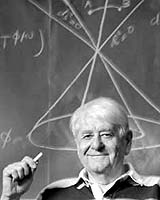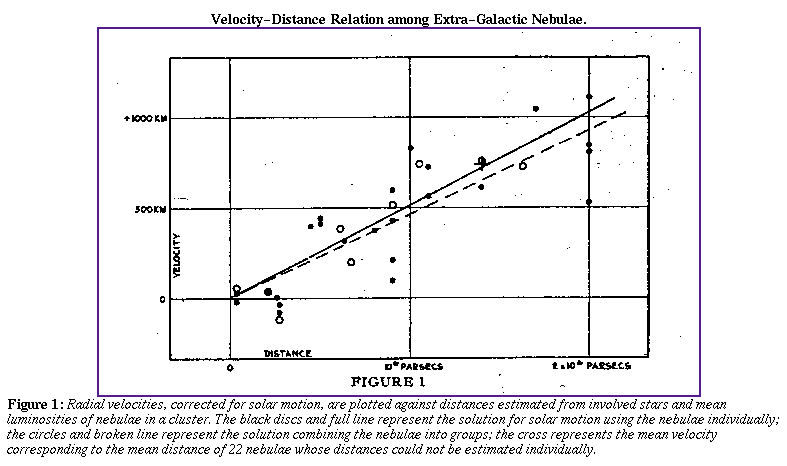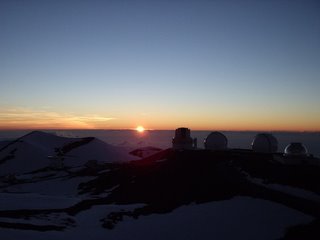Yesterday I asked for some more examples of crank emails, this morning I found about 15 in my inbox, a big shout out to
CMB for sending his collection. In particular one stood out, it is an author attempting to hawk his Anti Big Bang book called - Bye Bye Big Bang - Hello Reality, or as I would have called it Bye Bye Scholarly Study - Hello Page After Page Of
Embarrasingly Poor Arguments. NOTE: I haven't changed anything except to tidy up the lines a bit, all those strange symbols were in the original email. Oh and I removed the links to the book at Amazon because they don't fit on the page, the spelling mistakes are all the original authors. If this is a
Google search then welcome, let's just have a quick look at how little William C. Mitchell knows about Cosmology, and research, and writing legibly.
Subject: COSMOLOGY
If you aren't interested in cosmology, please don't read any further. I
don't want to annoy anyone.
BIG BANG FRAUD © 2004 William C. Mitchell
The following is a review of some of the many items that are part of an
elaborate fraud that is perpetrated by the Big Bang cosmology establishment.
Some Necessary Background Information.
The solutions to Einstein's Special Relativity equations, as solved by Alexander Friedmann, provided for three possible cosmological â€cases†on which Big Bang Theory (BBT) is based. Those cases are: a “closed“ universe having positively curved space that would eventually collapse; a “flat†universe having uncurved Euclidean space that would expand forever; or an “open†universe having negatively curved space that also would expand forever, but at a slowly increasing rate. (Before Friedmann's work, I don’t believe that Einstein had ever given any consideration to negatively curved space.)
The Velocity of Matter in Space.
The velocity of matter departing from us in space, that is calculated by an equation [V/c = (Z+1)2 -1)/(Z+1)2 +1)], that is derived from the Einstein-Lorentz transformations, results in a rate of expansion that reaches c for large redshifts. However, that is incompatible with the Friedmann closed, flat or open universe cases mentioned above; and it is also incompatible with a universe of relatively slowly increasing expansion that has recently gained considerable acceptance. Regardless of those incompatibilities, that equation continues to be used to determine the velocity of matter in space as a function of redshift.
Lets look at this claim, that cosmologists use the above equation to
"determine the velocity of matter in space as a function of redshift", this is of course rubbish, we don't need to know the velocities of objects, we can measure it using spectroscopy. We use the measured velocities to determine the physical distance to the object, using Hubble's Law.The second claim appears to be claiming that it is impossible for objects to appear to recede at greater than the speed of light, this is down to Mitchell's utter lack of understanding of the expansion of the Universe. It is entirely possible for space to appear to expand faster than the speed of light, individual regions of space expand at a fixed rate, so that if you look over a long enough distance the individual expansions add up to produce an expansion that is faster than light. There is absolutely no problem with reconciling faster than light expansion of space with General Relativity.The third claim is either a misstatement or a flat out lie, he is essentially claiming that when working out distances to objects in the distant Universe cosmologists neglect the effect of the extra expansion due to Dark Energy. This very easily
disproven, many people use Ned Wrights handy Cosmology calculator to convert between things like redshift, physical distance,
comoving distance etc, this program can be found
here. Try it out, you input the value of the Hubble Constant, the fraction of the energy of the Universe that is in matter (both luminous and dark), the redshift to the object you want to know the distance to, and,
drum roll, the fraction of the energy of the Universe that is due to Dark Energy. Try changing the value of the DE while leaving everything else the same, what happens?
that's right all of the calculated numbers change. So there you have it cosmologists do include the effect of Dark Energy.
Some More Background Information.
Hubble time, which is the time that the BB would have occurred if the universe had a fixed rate of expansion at the Hubble rate (the Hubble constant) ever since the BB. The consensus of working astronomers seems to be that rate should be about 65 km/sec/MPc, but, because it appears to make the BB universe older, BBers prefer a value of about 50 km/sec/MPc (equal to about 15 km/sec/MLYs) putting the Hubble Time at about 20 billion years,
This book is now quite out of date so I will forgive most of this, even though it is all wrong now, the currently accepted value of the Hubble Constant is around 72 km/s /
Mpc, on its own this would infer an age of the Universe that was too short, when compared to the ages of stars. Clearly you can't have stars older than the Universe. However when you include the effects of Dark Energy and Dark Matter, and do the full calculation you get and age of the Universe that is between 13 and 14 Billion Years (
Gyr), more than old enough to
accommodate even the oldest objects in the Universe.
The Age of the Universe.
The age of the BB universe is based on the “flat†universe case that became important as a result of Inflation Theory. According to that theory, the age of that flat universe is equal to 2/3 of the Hubble time, or about 13.3 billion years. Lately, that approximate age is most often presented as the true BB universe age.
A very much “open†universe of accelerating expansion, has recently become the favored new theory of many BBer. However, the age of the universe that is presented in the media is still based on the flat universe case of inflation theory; that is, at 2/3 of the 20 billion year Hubble time.
As my two previous points have explained this is simply wrong, use the cosmology calculator you will see that changing the value of any of the parameters, including the Dark Energy gives a different age for the Universe, (its the part that says: "It is now XXX
Gyr since the Big Bang.").
The Size of the Universe.
Using the above erroneously derived age of the universe, and based on no factual data, BBers have also erroneously assumed that the expansion of the outer edge of the universe has expanded at the speed of light. That allows them to determine its radius, in billions of light years, to be equal to its age in billions of years, or about 13.3 BLYs.
(A plot of the Friedmann's solutions to Einstein’s SR equations would show that, although the rate of expansion of a fixed rate universe would ever be at c, the initial rate of expansion of a flat rate BB universe would be higher, perhaps at about 2c; and the initial rate of expansion of a closed BB universe would be even higher, perhaps at about 3c or more; and the initial rate of expansion of the newly popular BB universe of accelerating expansion might be as low as 1/2c, or even lower.)
This whole statement is garbage, even the
wikipedia article gets the facts right on this. The fact that space/time is curved and that the Universe is expanding means that the radius of the observable Universe is not simply just the speed of light divided by the age of the Universe. The actual observable Universe calculated using all of the parameters in the cosmology calculator is about 46 Billion Light years in radius, you can see this in the cosmology calculator if you put a very high redshift, say 2000, this corresponds to a time only
65 thousand years after the Big Bang, now look at the
Comoving radial distance, this is how far light can have travelled from 65 thousand years after the Big Bang till now. Again Mitchell reveals he understands nothing about Cosmology, certainly not anything to do with the implications of an expanding Universe in General Relativity.
The Distance to Matter in Space.
Based on that erroneously derived present size of the universe, BBers have concluded that the distance to remote matter in space is proportional to its erroneously derived departing velocity.
Although many BBers still believe that, in accordance with inflation theory, the radius of the universe is many times larger than 13.3 BRYs, they continue to report the distance to high redshift matter in space in accordance with the above; and although many of them have recently accepted the very open universe of accelerating expansion, they continue to report the distance to matter in the same manner.
Thus the distance of matter in space and its velocity as determined by BBers are, not only erroneous, but inconsistent with any currently accepted variety of BB.
I'm not really sure what he means here, but as it is entirely based on his erroneous premises, it can clearly be seen to be nonsense.
Resulting Media Reports.
By the use of such fallacious logic, the distances and departing speeds of matter in the space of the universe, as determined and disseminated by the comological establishment, all that is read, seen or heard in the media, and accepted by all the world regarding those figures, is based on those compounded errors.
The only errors we have seen so far have been yours, to paraphrase a favourite film of mine, "you are a poor scientist Mr Mitchell".
More Background Information.
The so-called “Age Paradox†has plagued BBT since day one. Some stars are known by astronomers to be considerably older than the reputed age of the BB universe; and far worse than that, a number of astronomers have estimated that it might have taken more than 100 billion years for the formation of the giant galactic structures that are observed in space.
That is not a “paradox,†but a disastrous problem that BBers have struggled for decades to overcome, meanwhile attempting to hide it, or dismiss it as a trivial, soon to be solved problem.
There is no age paradox its all a load of bullshit, mostly spread by Creationists who think that if they can disprove
BBT then more people will believe the world is 6000 years old. I will state this clearly so it can be understood by anyone, including hopefully the
incompetent like Mr Mitchell. There are no known objects in the Universe that have measured ages greater than the age of the Universe within the errors of the measurement. I work on the study of Globular Cluster systems, cranks often claim that the ages of
GCs are older than the Universe, they are wrong, correctly determining the ages of these systems is difficult and requires a lot of telescope time, usually you don't get enough to do it very accurately, so what you do is try to measure many at once, when you do this equal numbers appear to be younger or older than their actual ages, this makes some of the objects which are actually 10-12
Gyr old appear to be 15
Gyr old. This is simply to do with signal-to-noise, statistics and fitting of templates to determine ages. Similarly with objects like white dwarfs, or certain low mass stars which we know could continue to shine for 100 Billion years, yet we never see any of them that are older than 13
Gyr, why is this? Because there are none older than 13
Gyr.
The point he makes about galaxy structures would actually appear to be true if you don't actually think about the issues for a moment. Lets face it what crank actually wants to do some thinking and then some difficult maths? For one, the early Universe was much more dense than it is now, as gravity acts as an inverse square of the distance between mass this means that if the Universe was half the size the average force of gravity between clumps of matter would be 4 times larger. Clearly earlier in the Universe it was much easier for gravity to pull matter together to from stars/galaxies/clusters of galaxies. A second point is that the simulations he talks about do not include the effects of dark matter, which contains many times as much mass as luminous matter, adding this in means you can easily form large structures in as little as a few
Gyr. If you don't believe me here is a picture of a simulation showing exactly that. Every dot in the image is a huge clump of dark matter (and stars).

Solutions to the Big Bang Age Problem.
A recent new scheme to help BBers solve their age-old age paradox is the invention of “dark energy†or “quintessence.†They have decided that those imaginary entities cause the rate of expansion of the universe to be accelerating. The universe would therefore have expanded more slowly in the past. It would therefore be older than previously thought, thus helping to solve their age problem. (Incidentally, some Bbers of long ago had proposed a universe of accelerating expansion, but their schemes failed to survive.)
Not much to say here, he provides no proof that the cosmological constant or
quintessence is impossible, mostly because it is far beyond his intellect to grapple with the maths I'm sure.
The Two Biggest Frauds of All:
The Big Bang creation of the universe was “out of nothing.†Until Inflation theory came along in the early 1980s, BBers believed that, before the Big Bang, there was no matter, no energy, no time, no space.
An equally ridiculous solution to that fraud was the â€inflation†resulting from a “vacuum fluctuation†of the energy of empty space as the source of the Big Bang. Somehow the space and energy, that hadn’t perviously existed, was now said to have been there all the time, and it contained unimaginable amounts of energy.
This is a vacuous and also incorrect statement. The
BBT makes no real claims about what happens before the BB in fact it makes no real claims at present about what happened in the very smallest fraction of a second after the BB, why? Because when the matter reaches the incredibly high energies found just after the BB the laws of physics break down, we cannot use the laws we have now to explain all the way back. We know that the laws of physics break down because gravity is not yet reconciled with quantum mechanics and until we have a quantum theory of gravity we can't know what happens earlier with any certainty. Does this matter? Not really, the theory as a whole does not depend on the mechanism, as long as some process can produce the initial expansion and then the inflationary phase everything is fine.
The above are just a few of the items of fraud that continue to be disseminated. However, leading BB cosmologists are well aware of those; and many more problems and inconsistencies of BBT. While attempting to appear unconcerned, minimize their importance, or avoid mention of them, they struggle to invent new schemes to circumvent them; while making big money as professors, lecturers, TV personalities, and authors of articles and books with intriguing new titles. However, most of the innovations they produce (like inflation and acceleration), that are intended to solve BBT problems, produce only new problems.
Meanwhile, those intelligent and educated establishment folks choose to ignore the problems of BBT, and to perpetrate the fraud that continues to be disseminated in the media.
I'd love to know who makes big money from being an astronomer, I certainly don't know of any rich astronomers. If I wanted to be rich the easiest way would be to take up televangelism, or to write a really poor book about how scientists are frauds and the
BBT is wrong and then try and sell it to the
wingnut creationists. I mean you wouldn't even need to do any hard work then right? No need to check facts, or test theories, you know those people will believe anything as long as it makes
BBT or evolution look bad.
If you would like to gain a thorough understanding of Big Bang Theory and its many flaws; and then learn the truth about cosmology based, not on wild ideas and fantasies, but on vast amounts of astronomical data, true science, logic and common sense, you must read my book, BYE BYE BIG BANG - Hello Reality.
This inexpensive, 446 page, paperback - that includes a bibliography, 5 appendixes, and name and subject indexes - can be found in most large US city and large US university libraries; or order it from your book dealer (at $19.95 - available to them from THE DISTRIBUTORS*), or click on:
Best wishes,
William C. (Bill) Mitchell
Carson City, Nevada, USA
*Conact Patty Walsh at THE DISTRIBUTORS, 702 S. Michigan, South Bend, Indiana
46601, USA. Email: pwalsh01@ameritech.net, Telephone: 574-232-8500
In conclusion I can't help but feel terribly embarrassed for the poor guy, it really is that bad, he hasn't even checked the simplest of his arguments, I would expect better from a high school essay. There are plenty of problems with the BBT, none of which are major, if there weren't there wouldn't be anything left for Astronomers to do, but he has decided to attack problems that don't exist. Very sad. I think we can see from the short email that reading the book is probably going to be pointless. If he can fit that many distortions, lies, out of date data into just that few lines how many will the book have?















